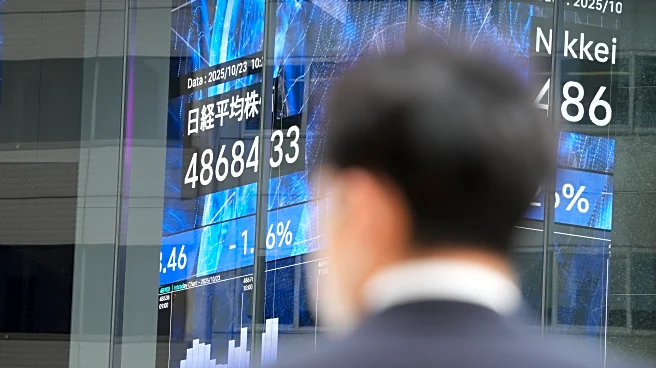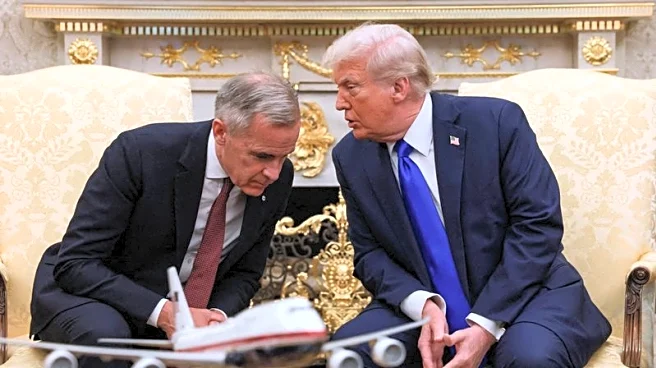What's Happening?
Gold prices have soared to record highs, surpassing $4,300 per ounce, driven by a combination of factors including Federal Reserve rate cuts, increased buying from China, and a global rush into safe-haven assets. The price of gold briefly reached $4,381
per ounce before easing slightly. This surge represents a significant annual increase, marking the strongest year for gold since the late 1970s. The rise in gold prices is attributed to softer U.S. inflation, geopolitical tensions, and policy risks, which have heightened the appeal of gold as a secure investment.
Why It's Important?
The dramatic increase in gold prices reflects broader economic and geopolitical uncertainties. As a traditional safe-haven asset, gold is often sought after during times of market volatility and political instability. The current surge indicates investor concerns over inflation, Federal Reserve policies, and global conflicts, including the war in Ukraine and U.S.-China trade tensions. This trend impacts various stakeholders, including investors, financial markets, and central banks, as they navigate the complexities of a shifting economic landscape.
What's Next?
The future trajectory of gold prices will depend on several factors, including upcoming U.S. inflation data and Federal Reserve meetings. Analysts predict continued volatility, with potential for further increases if economic and geopolitical uncertainties persist. Investors and policymakers will closely monitor these developments, as they could influence investment strategies and economic policies. The ongoing demand for gold as a hedge against risk may continue to drive prices higher, with implications for related markets and industries.














